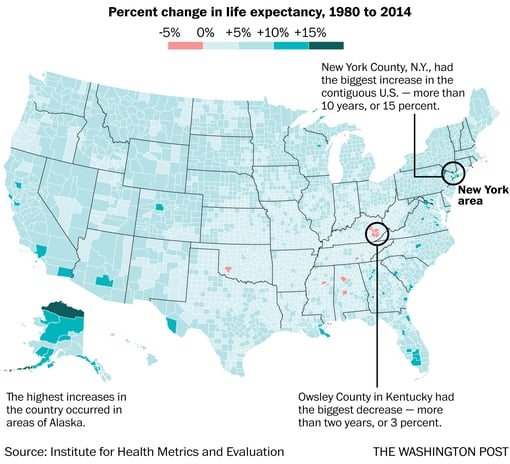File this one under “never knew this group existed but what a cool idea”: The Consumer Technology Association Foundation, a public foundation with the mission to link seniors and people with disabilities with technologies to enhance their lives. Yep, they exist and they published a report that found, among other things, that “meeting the needs of a growing aging population will require new technologies, partnerships, ideas, and business models.”
Ok, so that’s not much of a revelation to those of us entrenched in this field. But read on, it gets better.
The report, titled “Outthink Aging,” also examines how technology will empower seniors to live longer, healthier, and more independent lives by preventing fraud and abuse, providing greater social connectivity, and improving access to vital information and services. Reaching all of these goals remains to be seen but they are worthy.
Among the more salient points made in the report is that technology is just part of the answer to addressing the complex challenges of an aging population. More innovation is needed in our field and technology is just one piece of this puzzle. Amen, and as the report aptly notes, “the aging population is not a user group.”
Human needs are complex and not easily met through technological fixes alone, it further states. The trick is to engage this cohort by “leveraging technical innovation and human empathy to enhance the human experience.”
I’m not sure what engaging “human empathy” looks like, but I understand where they are going, and I would add that the best way to create new innovations that meet the needs of an aging population is to develop the technology with elders and individuals with disabilities—not just for them.
In addition to some great ideas about innovation and technology, the report also notes that activities of daily living are “activities that happen on the surface of day-to-day life.” The groups offer a new list of “core desires of an aging population,” as follows:
- Health: Access to high-quality healthcare encouraging both physical and cognitive wellbeing.
- Connection: Capability to stay in touch with loved ones and maintain an active role in their communities.
- Security: Ability to live safely in one’s home and have protections against theft and financial fraud.
- Dignity and Independence: Respect and control over direction of their lives.
Also notable is the fact that the CTA Foundation collaborated with IBM to create the report. IBM seems pretty happy about it: “[It] is an excellent example of the new types of relationships that will be necessary to meet the needs of the growing aging population,” Dr. Ruoyi Zhou, director of IBM Accessibility Research, says in a statement. He’s right—new types of relationships will be a crucial factor in addressing the needs of elders in useful and innovative ways.
Stephen Ewell, executive director of the CTA Foundation, is also on board. In the same statement, he asserts that “new partnerships between industry, nonprofits, academia, government, and the general public will form to accomplish these goals.” He’s right, and I’m happy to see that more and more folks are getting it.
In addition to innovative ideas and collaborations, the two groups conducted an informal poll at last year’s Consumer Electronics Show (N = 300 to 400) to gauge attendees’ concerns about the challenges of aging:
- 47 percent of respondents worry most about losing their memory and suffering from dementia as they age.
- 38 percent believe smart homes and the Internet of Things will best help manage the aging process.
- 35 percent believe discussing assisted/long-term care is the most difficult conversation to have with their parents.
The report also cites other research from the foundation showing that the U.S. market for active aging technology now encompasses 85 million Americans, representing a $24.4 billion market opportunity in 2015 that is expected to grow to $42.7 billion by 2020 (more from AARP’s report on the longevity economy HERE).
In conclusion, I believe this report is a great resource if you’re interested in dipping your toe into the field of aging services or if you are already in it and need a refresher or energizer on innovation and resources.
If you want a focused approach, facilitated by experts in the senior living field and candid feedback, contact Quantum Age today.
 sometimes separate countries, thanks to a number of factors that have had societal benefits but have also created our current conundrum of generational segregation.
sometimes separate countries, thanks to a number of factors that have had societal benefits but have also created our current conundrum of generational segregation.
 conspicuously in the other direction,” he notes in the article, citing a recent study in the
conspicuously in the other direction,” he notes in the article, citing a recent study in the  organization has made great strides in bringing innovation to community-based and long-term and post-acute care in the last couple of years by way of matching investors with entrepreneurs in the space. If you need proof, look no further than their recent
organization has made great strides in bringing innovation to community-based and long-term and post-acute care in the last couple of years by way of matching investors with entrepreneurs in the space. If you need proof, look no further than their recent  onomy
onomy
 reminder that post-acute care stands on the precipice of major change. In fact, the opening line of the report alludes to this conclusion: “A&M believes the post-acute sector will be transformed during the next 10 years.”
reminder that post-acute care stands on the precipice of major change. In fact, the opening line of the report alludes to this conclusion: “A&M believes the post-acute sector will be transformed during the next 10 years.”
 that the next two decades will bring on a surge of older adults—to the tune of nearly 79 million people over the age of 65 in the United States alone. But did you know that only 1 percent of the current U.S. housing stock offers the five design elements that would allow older adults to live comfortably? Yes, that’s 1 percent of homes that have zero-step entrances, single-floor designs, wide halls and doorways, electrical controls reachable from a wheelchair, and lever-style handles on faucets and doors, according to recently released study by Harvard University.
that the next two decades will bring on a surge of older adults—to the tune of nearly 79 million people over the age of 65 in the United States alone. But did you know that only 1 percent of the current U.S. housing stock offers the five design elements that would allow older adults to live comfortably? Yes, that’s 1 percent of homes that have zero-step entrances, single-floor designs, wide halls and doorways, electrical controls reachable from a wheelchair, and lever-style handles on faucets and doors, according to recently released study by Harvard University. This of course is not rocket science—you can do the math. The point is that the opportunities driven by these groups, including the products and services they purchase and the additional economic activity this spending generates will extend into the latter part of this century.
This of course is not rocket science—you can do the math. The point is that the opportunities driven by these groups, including the products and services they purchase and the additional economic activity this spending generates will extend into the latter part of this century.